Celebrating 10 Years of The AI Summit New York and The Changing Face of Event Sponsorship
To mark ten years of The AI Summit New York, we sat down with some of the team behind the event to reflect on how the event, and the discipline of event marketing itself, which is so key to our partners, have transformed over the past decade.
In this piece, we explore how:
- Exhibitor focus has evolved from awareness to measurable outcomes, while event marketing has simultaneously moved from static booths to experiential engagement
- Event ROI now blends revenue, relationships and long-term brand equity to create comprehensive value measurement
- The AI Summit's journey reflects how B2B events have matured — transforming from sales stages to strategic growth platforms
Why This Milestone Matters
Over the past decade, few fields have grown as quickly as AI, with what was once largely theoretical evolving into one of the key forces transforming almost every industry. Over the course of its first nine editions — and now approaching its tenth — The AI Summit New York has not only witnessed this growth but also served as a staging ground for the partnerships and conversations that have helped shape this new paradigm.
“Back then, the Expo was smaller and fewer people wanted to exhibit because it was more conceptual — they didn’t actually have anything to show,” recounts Thomas Peck, Sales Director for The AI Summit Series. “It was more about awareness for sponsors, whereas now it’s all about showcasing solutions and meeting the buyers who can actually purchase the software or service.”
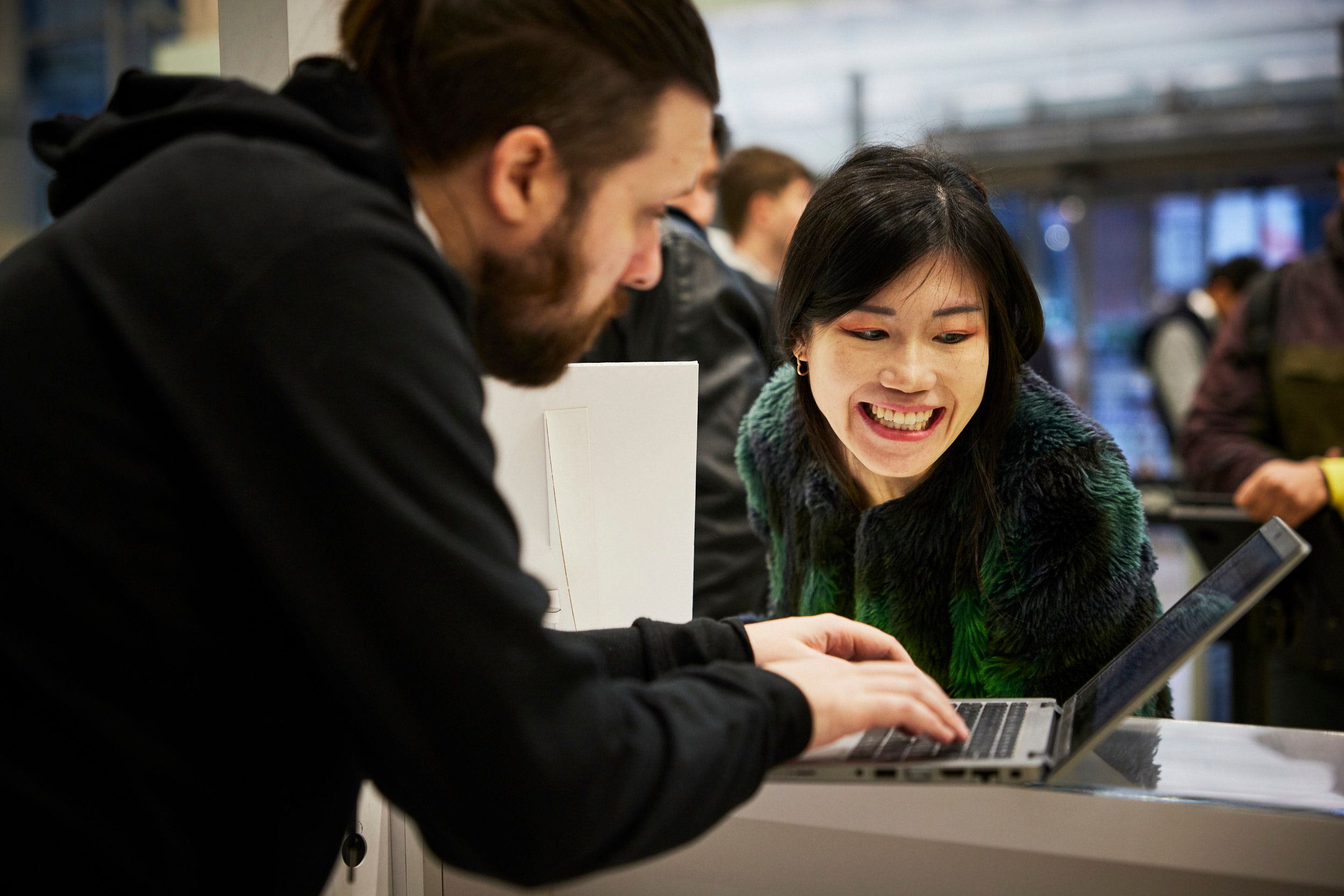
At every step, event marketers have had to evolve their approaches, mindsets and offerings to keep pace with the shift from the fringes of innovation to a revenue-tied, boardroom priority.
So, this tenth anniversary is not just a milestone for The Summit, but also one for the industry it serves. It’s a chance to celebrate a decade of lessons, recognize how event marketing has adapted to match AI’s rapid rise, and explore what’s next for exhibitors and marketers alike.
In this report, we look back over the last decade through the eyes of the event professionals — marketers and salespeople — who witnessed and enabled the changes that have helped The Summit become the highly anticipated, community-led event it is today.
Through them, we’ll see how the challenges of the early years led to the successes of today, highlighting how the constant goal of optimizing and elevating sponsor and exhibitor experience has helped The AI Summit New York team iteratively build one of the most dynamic tech conferences of recent times.

As such, The AI Summit presents a unique case study for event marketers, as the changes it has undergone reflect the unprecedented, rapid growth of a field that few saw coming. For instance, the first delegate brochure cited a widely shared prediction that, over the next ten years, enterprise spending on AI technology would increase from $200 million to more than $50 billion.
While directionally right, reality has far exceeded that forecast. IDC estimates global AI spending at $184 billion in 2024, rising to more than $300 billion by 2026, while Bloomberg projects generative AI alone could reach a $1.3 trillion market by 2032. So, the story of how we transitioned from then to now is one that The AI Summit is uniquely placed to tell.
Today, The AI Summit New York positions itself as the enterprise-first platform “where commercial AI comes to life.” It has become a marketplace for real solutions, measurable outcomes and long-term partnerships. But back then, it was a place where brands came to test the waters, explore potential and be seen alongside a new wave of technology.
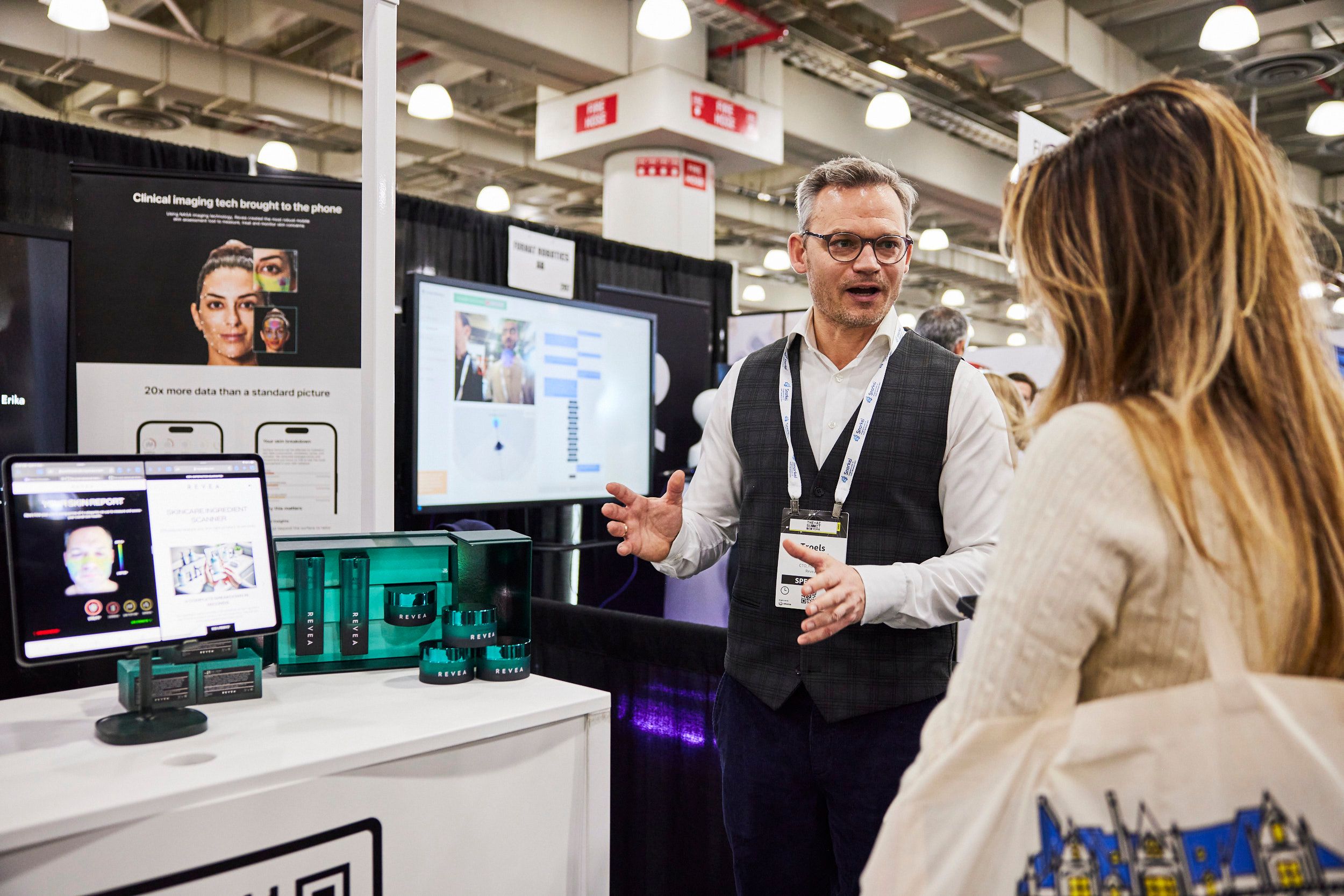
Then: The Early Years
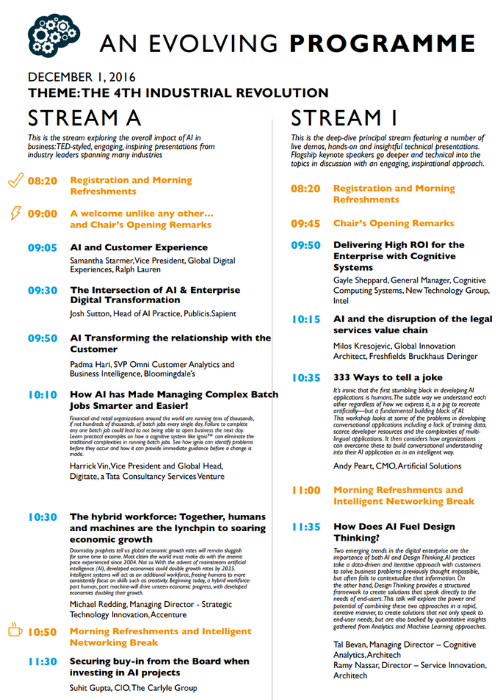
2015-2019: Awareness Over Outcomes
In its early years, The AI Summit New York was more about curiosity than outcomes. With AI still on the edge of mainstream adoption, most enterprises came to The Summit to ask questions rather than showcase solutions.
The show itself reflected that. The floorplan was smaller, exhibitors fewer, and most booths had little more than vision slides. “People didn’t really have the sort of demos being run in the same way that they do today. Maybe a few of the largest tech companies had something, but it wasn’t really showing how AI was impacting work,” recalls Senior Account Manager, Andrew Mears.
Sponsor objectives were also different, as most weren’t there to generate leads, but rather to establish themselves as credible players in an emerging field. Founding partners, which included Amazon Alexa, IBM Watson, Microsoft, and Digitate, anchored the event primarily because they wanted to be associated with the first AI event dedicated to business. Yet, many enterprises remained unsure whether AI would scale.
Even the stages spoke to the industry’s infancy. In 2018, sessions were spread across “Stream A, I and S” — designations that had no relation to themes or sectors. “Now we need to have stages that are really showing what the focus is, because people have a lot more knowledge about AI,” says Andrew.
The content on those stages reflected the uncertainty the sector was still facing. Jingjing Virgo, Portfolio Manager for The Summit, remembers that year as a tipping point:
“There was strong curiosity and enthusiasm… but enterprises were cautious. They didn’t know what it meant to them. Financial services had some early use cases, but other industries were lagging. And back then, ethics and governance weren’t really on the agenda.”
The 2016 Agenda
This all made proving ROI a completely different type of challenge for event marketers at the time. Sponsors had no means of tracking leads in any meaningful way, so awareness was often the only achievable goal. As Andrew recalls:
“You didn’t get lead generation from speaking at a presentation… you could see who was in the audience, but you wouldn’t really know.” So, success was measured more by presence and perception than by data, leaving marketing teams with little hard evidence to justify event investment beyond the brand halo of being loosely associated with AI.
In short, The AI Summit New York’s early years were more about potential than proof. It was a gathering place for visionaries and explorers — less about commercial ROI and more about laying the groundwork for a sector that was only just beginning to take shape.
Inflexion Points
2020-2024: From Features to Fundamentals
As The Summit matured, several key moments marked clear shifts that changed both how the event looked and what sponsors expected from it. Over time, these inflexion points transformed The Summit from a conventional conference into a dynamic, festival-like platform with sharper ROI expectations.
The most significant driver of change has always been feedback, which The Summit team consistently seeks from a range of stakeholders. For example, the shift towards “festivalization” came from attendees making it clear they didn’t want to just sit in conference rooms all day — they wanted experiences.
“People needed more of a reason to come than just attending a bunch of presentations or touring booths, especially if they were going to be there for more than one day. They wanted to have a good time while they’re there,” explains Andrew.
Since those early editions, this sentiment has driven the addition of increasingly interactive formats, such as the AI Playground, hackathons, the Builder's Lab, and hands-on workshops — all of which give people reasons to stay for two full days instead of dipping in and out.
However, it wasn’t just fun experiences that attendees were seeking — they also wanted their engagement with brands and solutions to feel more intuitive and purposeful. “In the early days, sponsors would literally grab attendees from the aisles who matched their target list and pull them into the booth,” Jingjing recalls.
“They often didn’t even have an AI product to sell; they just wanted to meet as many people as possible from the companies they’d identified and let them know what they had to offer. The AI Summit setting was the ideal backdrop to reinforce how cutting-edge they were.”
Over time, and guided by event marketers, these approaches have evolved into more professionalized, structured networking formats — most notably the new hosted buyer program at The AI Summit New York.
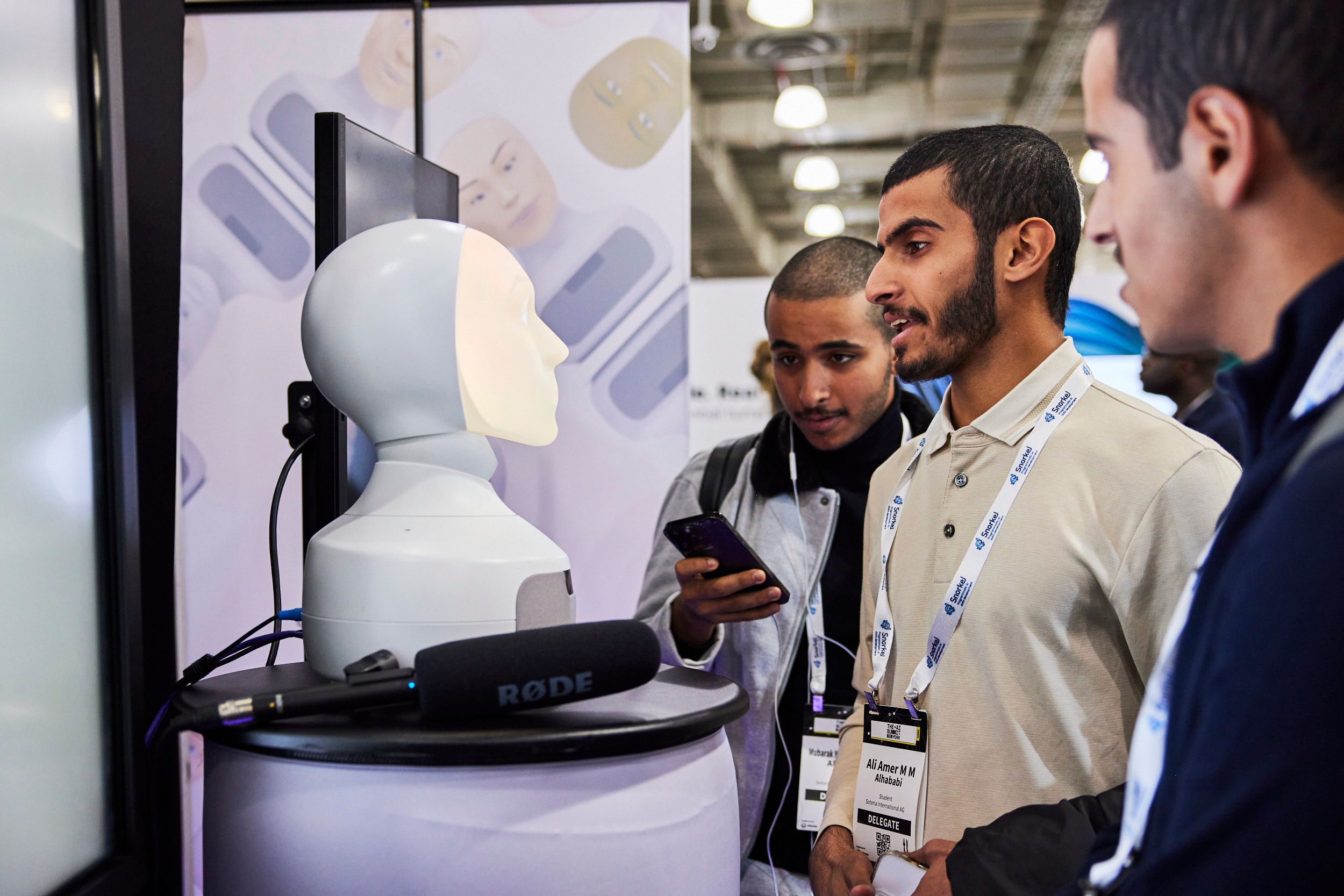
Adapting at Speed: The Dawn of GenAI
In its first few years, The Summit’s content centered on machine learning, computer vision and facial recognition. But by 2022, when generative AI (GenAI) tools such as ChatGPT broke through, the conversation shifted dramatically. The moment not only highlighted how far AI had come, but it also provided businesses across various sectors with a clear view of the technology’s practical applications.
So, as GenAI quickly became the headline act, it marked the next major turning point for The Summit, forcing the agenda to evolve just as rapidly. By that year, mainstream awareness had surged, and new vendors were flooding the Expo floor.
“I remember a colleague asking me, have you seen how many people are posting about generative AI? It seemed like there were a lot more new companies than before, many of them suddenly well-funded and visible,” says Mears.
GenAI didn’t just change the content mix— it also altered sponsor behavior. More start-ups sought The Summit as a launch platform, while established enterprises doubled down on use-case-driven demos to prove they were ahead of the curve.

Pandemic-Driven Digital Acceleration
No review of this period would be complete without the impact of COVID-19. The pandemic forced The Summit to go virtual, disrupting long-standing formats while accelerating its digital transformation.
New tools were introduced to deliver sharper reporting for remote audiences, and apps such as Swapcard — a community platform — became central to pre-event planning and management.
“Conversations, meetings, anything that was helped by in-person just wasn’t working in the same way at all for digital. That’s when we really knew we needed to show the value of being face-to-face,” Mears reflected.
So, when in-person events returned, those digital learnings stuck, as human networking became more prized than ever. The AI Summit New York doubled down on curated, face-to-face formats such as hosted-buyer meetings, structured networking and live demos, then paired them with badge scanning and post-show lead reports to demonstrate impact.
Follow-ups after in-person meetings also yielded markedly higher response rates than digital-only outreach, reinforcing the value of being present in person. It was a reminder that while digital tools can extend reach, the trust and momentum built face-to-face remain the foundation of meaningful engagement at The Summit.

Sponsor-Driven Innovations
Through all this disruption, sponsor feedback has remained a key driver of change. One striking example came in 2019, when IBM pioneered badge scanning — capturing attendee details such as job title and company information as they entered a presentation.
Because delegates had already agreed to share their information with The Summit, the process was seamless and compliant, with minimal impact on the attendee experience. But the potential it held for exhibitors was significant, as it turned what had once been an untrackable activity into a measurable lead-generation channel.
For event marketers in particular, badge scanning created a new, direct link between speaking opportunities and pipeline impact — proof that thought leadership sessions deliver tangible value beyond brand awareness.
“They [IBM] were the only ones doing it that year, collecting leads from their presentation,” recalled Mears. “The success of that approach is what inspired us to begin offering it to all our bronze and upwards sponsors.”
The adoption of badge scanning is a clear example of sponsor-led innovation, and it has led to new capabilities that have enabled better benchmarking of ROI for sponsors. And it is just one of many iterative changes that have shaped The AI Summit New York over the years.
Taken together, these moments defined a new phase for The Summit: festivalization made events more engaging, GenAI made them more urgent, Covid made digital data indispensable, and sponsor feedback made ROI more measurable.
These inflexion points ensured The Summit kept pace with the industry it serves — fast-moving, experimental, and relentlessly outcome-driven.
The Evolution of Event Marketing: The AI Summit New York Story
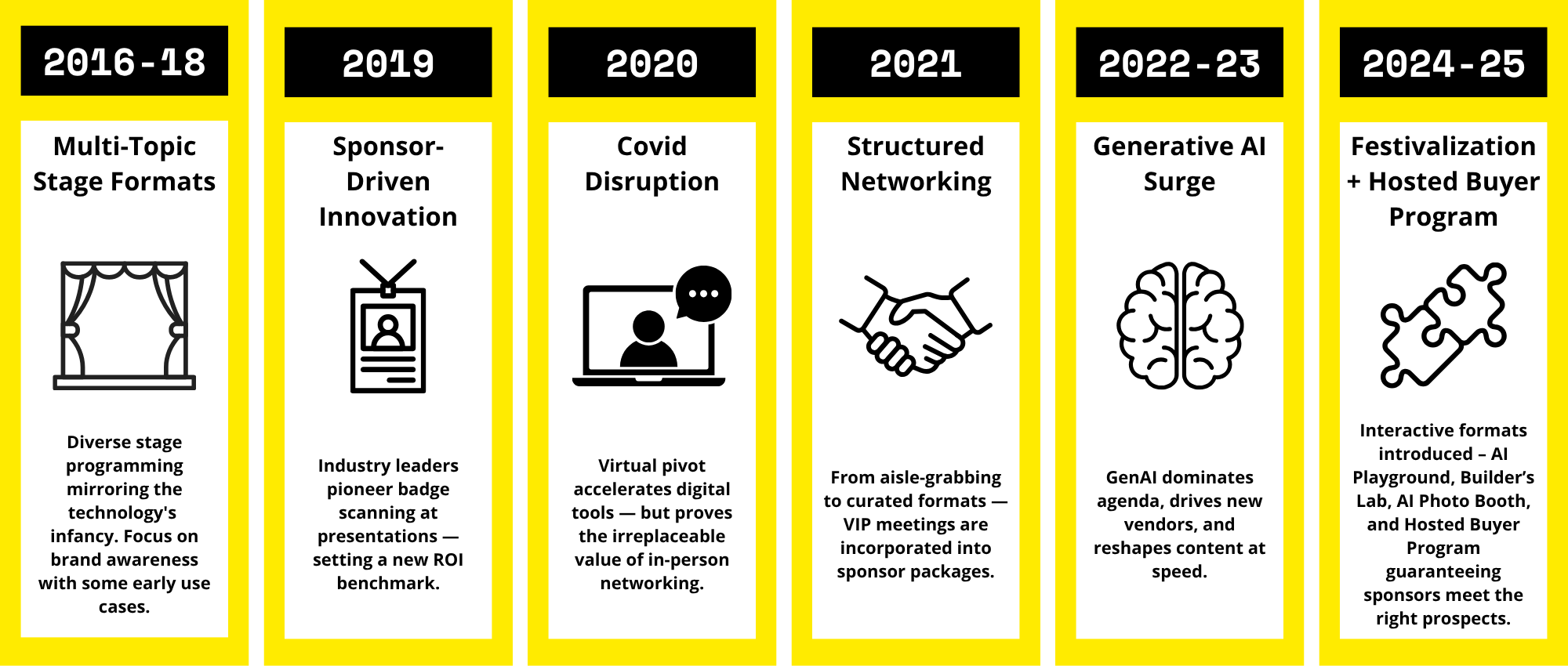
Now: The Age of Optimized Sponsors
A decade on from those early days, The AI Summit New York has become a mature marketplace where sponsors arrive with sharper objectives, more polished activations, and a clear focus on measurable outcomes.
What once revolved around brand awareness now centers on meeting buyers, proving ROI, and embedding The Summit into wider go-to-market strategies. Hosted-buyer programs and structured networking sessions are no longer add-ons but central features. Sponsors come with a clear understanding of their ideal customer profile (ICP) and KPIs, often collaborating closely with event teams beforehand to target the right conversations.
“There’s a longer review process now,” says Andrew Mears. “It means a lot more collaboration with sponsors before the event to find out exactly what they’re looking for. Ideally, if they can give us precise KPIs — how many leads they need, what job titles they want to meet — we can help them prepare for that.”
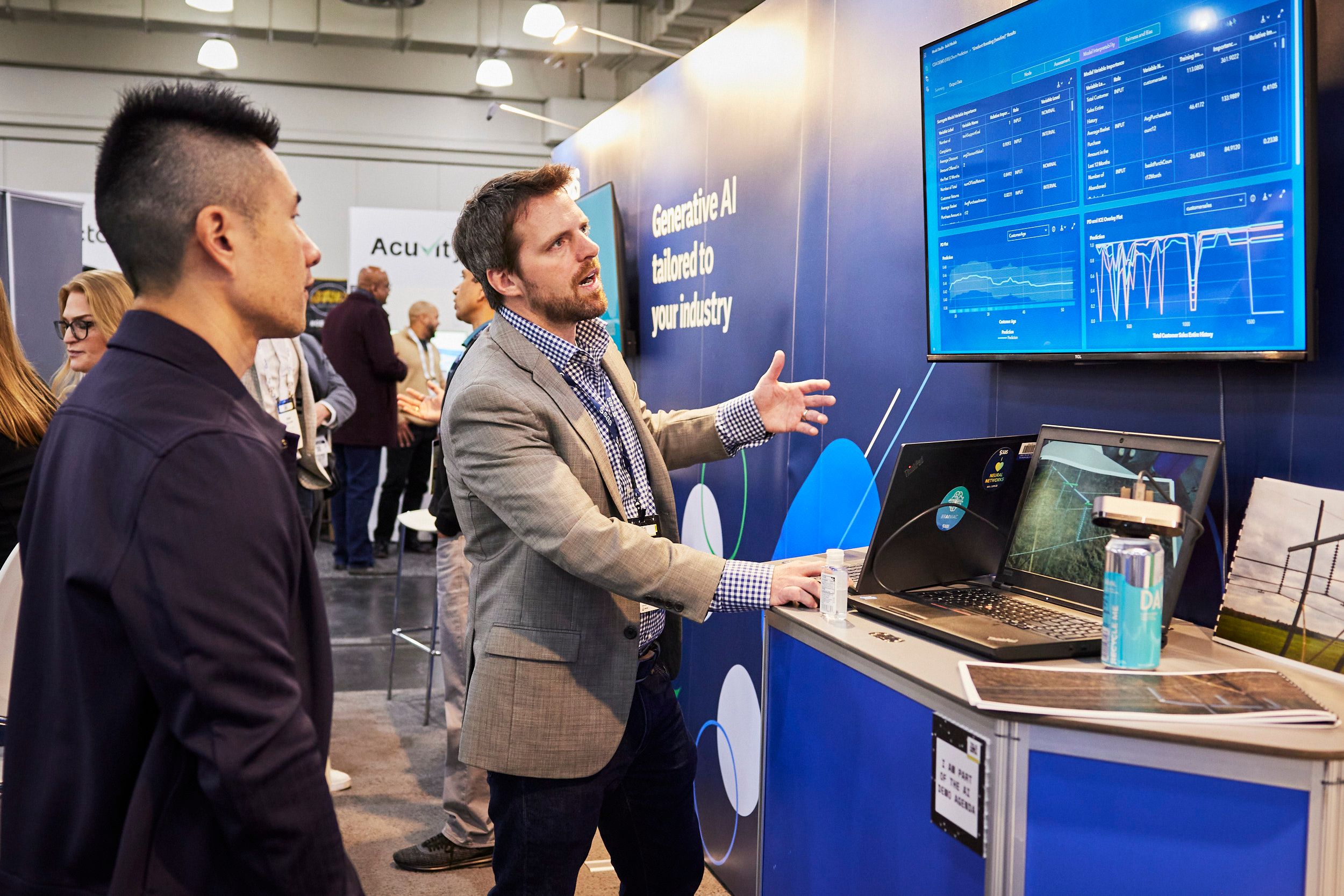
The Stand Experience
The exhibition floor has transformed into a space built for proof, not promise. Booths are no longer static banners or slide decks; live demos are expected, case studies are commonplace, and proof-of-concept showcases are the norm. Hardware players now stand alongside software and service providers, creating a fuller ecosystem view.
Sponsors understand that demonstrating outcomes in the moment is what resonates. “Sponsors expect and have to prove measurable ROI. That’s led to more sophisticated sponsorship packages, including thought leadership, data-driven insights, and tailored activations — as opposed to just being there with a booth on site,” explains Rory Crone, Senior Marketing Director for the AI Summit Series.

Stage Architecture and Content
The stages, once labelled with generic stream names like A, I, S, are now carefully structured around themes and industries, reflecting both the sophistication of modern audiences and the diversity of AI adoption across sectors.
Healthcare and finance remain consistent anchors, while newer domains such as agentic AI, ethics and sustainability have grown in significance as adoption has accelerated.
In 2025, The AI Summit New York has added a stage dedicated entirely to Creative Industries, showcasing how AI is transforming storytelling, design and artistic expression across film, gaming, music, fashion and visual arts. Designed as a festival-style feature on the Expo floor, it combines a mix of formats across two themed days: VFX, Media & Gaming – Visual Storytelling and Music, Fashion & Art – Identity & Expression.
Attendees are able to see AI-enhanced workflows in action — from generative music and digital fashion to immersive gaming and visual effects — with the aim of offering both inspiration and practical strategies for creators and technologists alike.
At the same time, some themes have remained constant since the early days. Challenges around securing internal buy-in, embedding AI across the enterprise, defending against AI-driven cyber threats and exploring human–AI collaboration continue to evolve.
And The AI Summit New York remains a proving ground where buyers can gain one of the most comprehensive views of the innovations driving progress, all in one place.

The Measurement Stack
The aspect of event marketing that has undergone the most significant change over the years is how The AI Summit New York measures ROI. Today’s sponsors expect a full data trail, with multiple touchpoints across the event experience:
-
Badge scans at theater stage doors to capture session attendance.
-
In-booth lead capture to track engagement at demos.
-
Post-show lead reports to provide verified contact data.
-
Recordings of presentations are delivered back to sponsors as marketing assets.
-
AI generated session summaries (e.g. Voxo) that can be repurposed for newsletters and social media.
“That’s how we’ve done things like providing recordings of presentations — we didn’t use to do that, but then it became standard. Now we’ve added session summary reports which clients can post on socials or send out in newsletters,” says Mears. “People want resources to come away with, something that shows the value of the event and helps them reach people after the show.”
This more sophisticated measurement stack reinforces The Summit’s role not just as a two-day gathering, but as a content and pipeline engine that sponsors can continue to leverage long after the booths are dismantled.
The Modern Sponsor Playbook
What defines a high-performing sponsor today isn’t just presence — it’s process.
Before (Planning)
- Define ICP & KPIs
- Seed session attendance with outreach
- Align demos to one crisp outcome
During (On-Site)
- Design booths and talks for scan-worthy engagement
- Deliver tailored activations that create memorable, hands-on experiences beyond static displays
- Guarantee ROI through hosted-buyer programs and structured networking sessions that connect sponsors with the right prospects
- Shift staff scripts from pitching → qualifying
After (Follow-Up)
- Follow up within 48 hours
- Repurpose recordings and session summaries into a 30-day campaign
- Partner with the event team to continue the conversation with The AI Summit New York audience after the event ends — through post-show content, amplification, or year-round community touchpoints
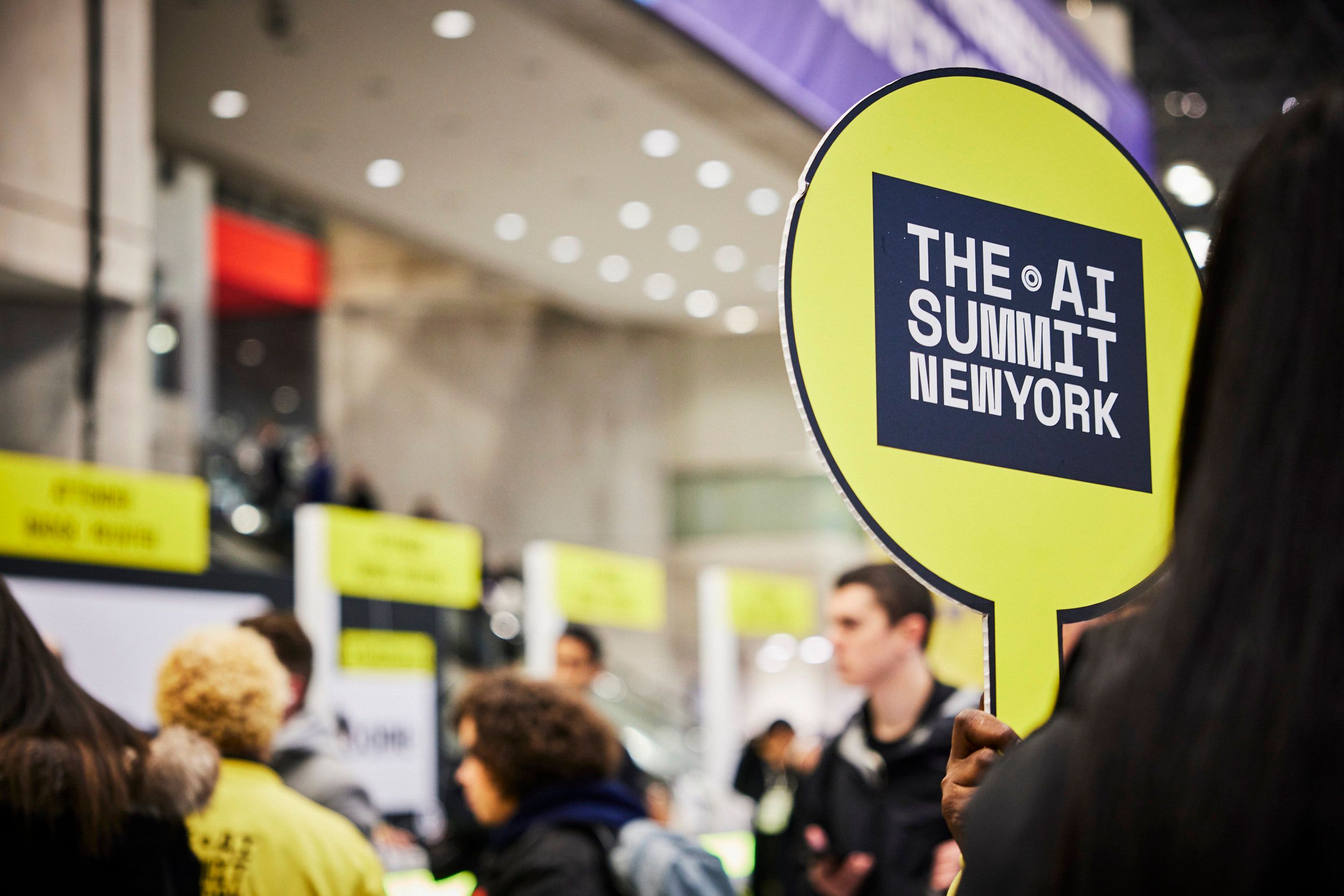
From Promise to Proof
The clearest evidence of The Summit’s evolution lies in the results it delivers. What began as a platform for awareness is now a proven driver of qualified meetings, sales conversations and long-term business impact.
In 2024, 94% of sponsors came with the objective of generating new sales leads — and The Summit delivered:
- 70% said The Summit enabled them to meet a good volume of quality prospects and potential partners.
- 71% rated the ability to connect with new prospects above average.
- 85% rated the suitability of delegates above average.
The event’s centrality to go-to-market strategies is equally clear. Some 93% of sponsors said The AI Summit New York is a key event for their business, while 40% specifically used it to meet with or support existing clients and partners.
The growth in sponsor numbers tells the same story: from around 20 sponsors and exhibitors in 2016 to more than 115 in 2024, The AI Summit New York has scaled in lockstep with the AI market it serves.
These figures demonstrate why The Summit is no longer just another date on the calendar, but a core partner in helping enterprises prove ROI, generate leads, and position themselves within a rapidly expanding AI ecosystem.
The AI Summit New York 2024
- ~115 sponsors and exhibitors
- Live demos, proofs of concept, and case studies expected
- Sponsor objectives: 94% aiming for new sales leads, 40% supporting existing clients
- 70% said The AI Summit New York enabled them to meet a good volume of quality prospects
- 85% rated delegate suitability above average
- 93% said The AI Summit New York is a key event for their business
- New stages: e.g. Gen AI Stage reflecting the surge in this technology
Winning at The AI Summit New York - And What Comes Next
The last decade has shown that the sponsors who extract the most value from The AI Summit New York treat it not as a booth booking, but as a strategic campaign. Being present is no longer enough — success comes from a process of precision and preparation.
The ability to prove ROI to a broader group of decision-makers is now what separates a good event activation from a great one. As Andrew Mears puts it: “Being able to demonstrate the success of the event to people that aren’t at the show… that’s probably the biggest change I’ve seen.”
Ten editions in, The AI Summit New York has proven itself to be the marketplace where commercial AI comes to life. So, the next decade will be about building on that foundation. For enterprises, this milestone is an opportunity to double down on demonstrating outcomes and establish lasting partnerships.
And for The AI Summit New York, it’s a promise: to keep evolving with the industry — agile, experimental and outcome-driven — so The Summit continues to set the standard for what event marketing can achieve.

)


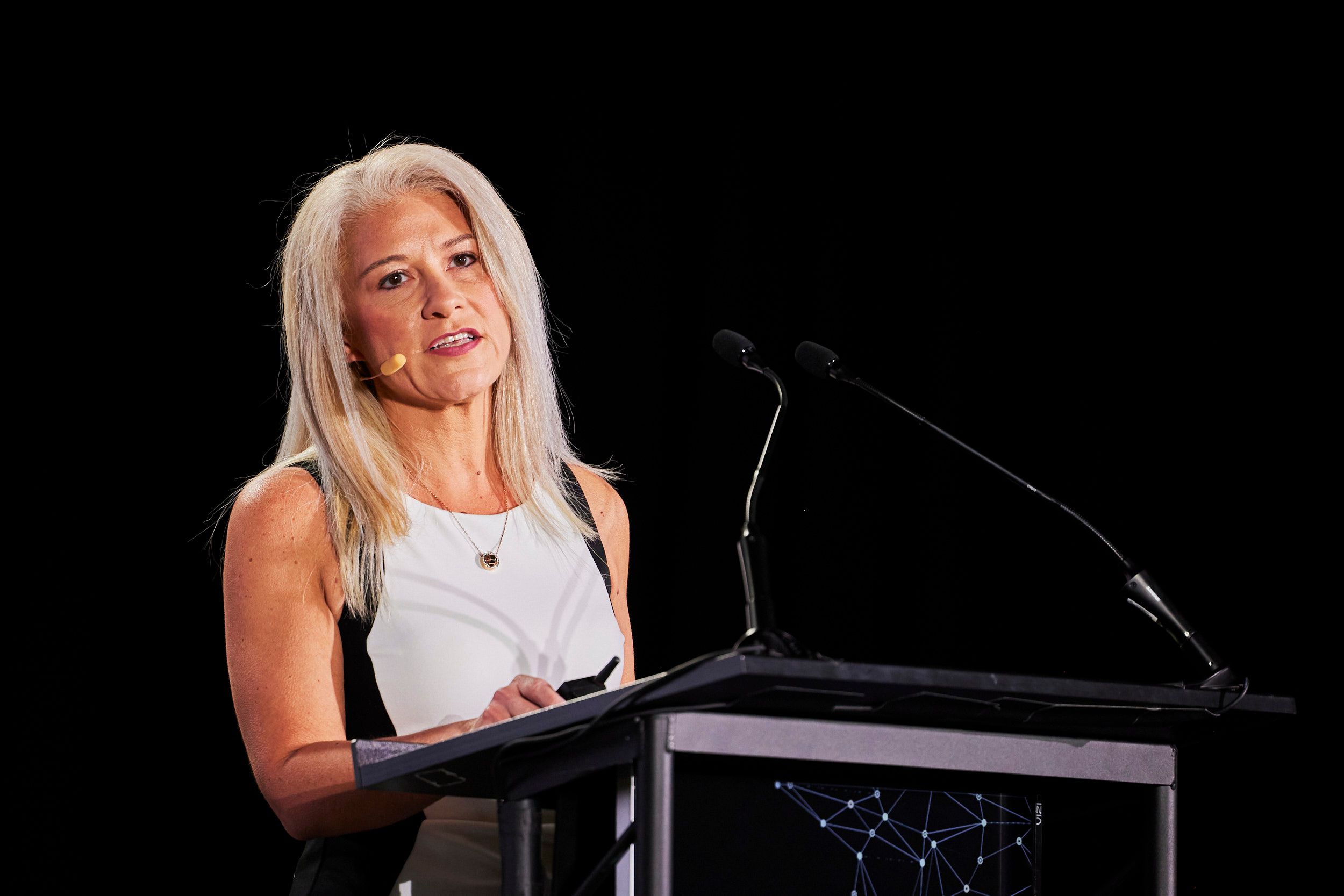
)
)


)
)

)

)
)
)
)
)
)
)
)
)
)
)
)

)
)
)

)
)
)
)
)

)
)
)

)
)
)
)
)

)
)
)
.svg)

)
)
)
)
)

)
)
)
)

)
)
)
)
)
)
)
)
.jpg/fit-in/500x500/filters:no_upscale())
)


)
)
)
)
)
)
)
)
)
)
)
)

)
)
)
)
)
)
)
)
)
)
)
)
)
)